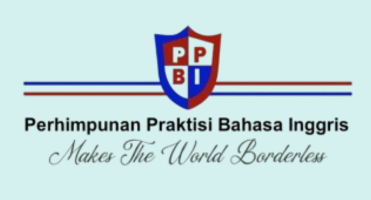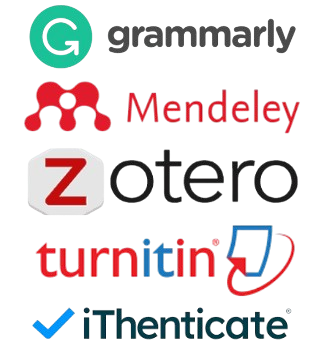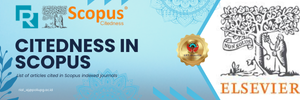The Impact of AI-Powered Software on Second Language (L2) Writing: A Systematic Literature Review
DOI:
https://doi.org/10.31963/rial.v2i2.4801Abstract
The utilization of artificial intelligence (AI)-powered tools in second language (L2) writing has evolved over the last decade. This attracted second-language writers to evaluate and improve their writing. This study aims to contribute to the understanding of the current state of AI-powered software in L2 writing, identify gaps in the literature, and investigate areas for future research. In this systematic literature review (SLR), we categorize the typology of AI-powered tools and their impact on L2 writing performance, discuss L2 writers' perceptions, and provide an overview of how they mitigate challenges and limitations in utilizing writing-assisted tools. The results of this SRL may have implications for writing teachers, L2 researchers, and developers of AI-powered writing tools in the field of second language writing.References
Almusharraf, N., & Alotaibi, H. (2022). An error-analysis study from an EFL writing context: Human and Automated and Automated Essay Scoring Approaches. Technology, Knowledge and Learning. https://doi.org/10.1007/s10758-022-09592-z
Bantis, A. M. (2008). Using task based writing instruction to provide differentiated instruction for English language learners [University of Southern California]. https://files.eric.ed.gov/fulltext/ED504698.pdf
Barrot, J. S. (2021). Using automated written corrective feedback in the writing classrooms: Effects on L2 writing accuracy. Computer Assisted Language Learning, 36(4), 584–607. https://doi.org/10.1080/09588221.2021.1936071
Chapman, C., & King, R. (2009). Differentiated instructional strategies for writing in the content areas (2nd ed.). Corwin Press.
Cotton, D. R. E., Cotton, P. A., & Shipway, J. R. (2023). Chatting and cheating: Ensuring academic integrity in the era of ChatGPT. Innovations in Education and Teaching International, Advanced Publication. https://doi.org/10.1080/14703297.2023.2190148
Deane, P., Odendahl, N., Quinlan, T., Fowles, M., Welsh, C., & Bivens-Tatum, J. (2008). Cognitive Models of Writing: Writing Proficiency as a Complex Integrated Skill. In ETS Research Report Series. https://doi.org/10.1002/j.2333-8504.2008.tb02141.x
Dizon, G., & Gayed, J. M. (2021). Examining the impact of Grammarly on the quality of mobile L2 writing. The JALT CALL Journal, 17(2), 74–92.
Fu, Q.-K., Zou, D., Xie, H., & Cheng, G. (2022). A review of AWE feedback: types, learning outcomes, and implications. Computer Assisted Language Learning, Advanced Online Publication. https://doi.org/https://doi.org/10.1080/09588221.2022.2033787
Galvan, J. L. (2017). Writing Literature Reviews: a Guide for Students of the Social and Behavioral Sciences (Sixth Edit). Routledge:Taylor & Francis Group. https://doi.org/10.1016/j.wneu.2016.11.058
Ginting, R. S. B., & Fithriani, R. (2022). Peer and automatic writing evaluation (AWE): Indonesian EFL college students preference for essay evaluation. LLT Journal: A Journal on Language and Language Learning, 25(2), 461–473.
Gutierrez, X. (2008). What Does Metalinguistic Activity in Learners’ Interaction During a Collaborative L2 Writing Task Look Like? The Modern Language Journal, 92(4), 519–537. https://doi.org/https://doi.org/10.1111/j.1540-4781.2008.00785.x
Haddaway, N. R., Page, M. J., Pritchard, C. C., & McGuinness, L. A. (2022). PRISMA2020: An R package and Shiny app for producing PRISMA 2020-compliant flow diagrams, with interactivity for optimised digital transparency and Open Synthesis Campbell Systematic Reviews. 18, e1230. https://doi.org/https://doi.org/10.1002/cl2.1230
Hong, W. C. H. (2023). The impact of ChatGPT on foreign language teaching and learning: Opportunities in education and research. Journal of Educational Technology and Innovation, 5(1), 37–45.
Ismail, S. (2019). Impact of differentiated instruction on the writing process of ESL learners. ELF Annual Research Journal, 21, 130–153.
Jarrah, A., Wardat, Y., & Fidalgo, P. (2023). Using ChatGPT in academic writing is ( not ) a form of plagiarism : What does the literature say ? Using ChatGPT in academic writing is ( not ) a form of plagiarism : What does the literature say ? Online Journal of Communication and Media Technologies, 13(4), e202346. https://doi.org/10.30935/ojcmt/13572
Kilkenny, M. F., & Robinson, K. M. (2018). Data quality: “ Garbage in – garbage out .” Health Information Management Journal, 47(3), 103–105. https://doi.org/10.1177/1833358318774357
Koltovskaia, S. (2022). Postsecondary L2 writing teachers’ use and perceptions of Grammarly as a complement to their feedback. ReCALL, 1–15. https://doi.org/10.1017/S0958344022000179
Lavallée, M., Robillard, P., & Mirsalari, R. (2014). Novices : An Iterative Approach. IEEE Transactions on Education, 57(3), 175–181.
Li, Z. (2021). Teachers in automated writing evaluation (AWE) system-supported ESL writing classes: Perception, implementation, and influence. System, 99, 102505. https://doi.org/10.1016/j.system.2021.102505
Li, Z., Dursun, A., & Hegelheimer, V. (2017). Technology and L2 Writing. In C. A. Chapelle & S. Sauro (Eds.), The Handbook of Technology and Second Language Teaching and Learning (1st ed., pp. 77–92). John Wiley & Sons. https://doi.org/https://doi.org/10.1002/9781118914069.ch6
Liang, J. (2007). Language Scaffolding in Second Language Writing. The Catesol Journal, 19(1), 71–88.
Muna, A., Ausat, A., Massang, B., Efendi, M., & Riady, Y. (2023). Can Chat GPT Replace the Role of the Teacher in the Classroom: A Fundamental Analysis. Journal on Education, 5(4), 16100–16106.
Nazari, N., Shabbir, M. S., & Setiawan, R. (2021). Heliyon Application of Arti fi cial Intelligence powered digital writing assistant in higher education : randomized controlled trial. Heliyon, 7, e07014. https://doi.org/10.1016/j.heliyon.2021.e07014
Petticrew, M., & Roberts, H. (2006). Systematic Reviews in the Social Sciences. Wiley-Blackwell Publishing.
Shaffril, H. A. M., Samsuddin, S. F., & Samah, A. A. (2021). The ABC of systematic literature review : the basic methodological guidance for beginners. Quality & Quantity, 55, 1319–1346. https://doi.org/10.1007/s11135-020-01059-6
Wee, B. Van, & Banister, D. (2015). How to Write a Literature Review Paper? Transport Reviews, 36(2), 278–288. https://doi.org/10.1080/01441647.2015.1065456
Xiao, Y., & Watson, M. (2019). Guidance on conducting a systematic literature review. Journal of Planning Education and Research, 39(1), 93–112. https://doi.org/10.1177/0739456X17723971
Xu, J., & Zhang, S. (2021). Understanding AWE Feedback and English Writing of Learners with Different Proficiency Levels in an EFL Classroom: A Sociocultural Perspective. Asia-Pacific Education Researcher, 31, 357–367. https://doi.org/10.1007/s40299-021-00577-7
Yan, D. (2023). Impact of ChatGPT on learners in a L2 writing practicum: An exploratory investigation. Education and Information Technologies, 1–25. https://doi.org/https://doi.org/10.1007/s10639-023-11742-4
Zhang, X. (2022). Improving Pigai as an Automated Writing Evaluation System: Considerations for Refinement. Frontiers in Psychology, 13, 795725. https://doi.org/10.3389/fpsyg.2022.795725
Downloads
Published
Issue
Section
License
Copyright (c) 2024 Research and Innovation in Applied Linguistics [RIAL]

This work is licensed under a Creative Commons Attribution-ShareAlike 4.0 International License.
Authors who publish with this journal agree to the following terms:
Authors who submit article to this journal, agree to grant the copyright to Research and Innovation in Applied Linguistics (RIAL) under a Creative Commons Attribution License: Creative Commons Attribution-ShareAlike 4.0 International License.
![]()
For collaborative works, authors should ensure that they have secured the necessary permissions from co-authors to submit the manuscript and grant the rights outlined in this policy.
Archiving and Access:
RIAL upholds an open access policy, ensuring that articles are freely accessible to a global audience upon publication. Authors' work will be archived electronically, facilitating its long-term availability and visibility.









.png)


